In the arrangement shown , by what acceleration the boy must go up so that 100 kg block remains stationary on the wedge. The wedge is fixed and friction is absent everywhere . ( Take g=10ms−2 )

For the block to remain stationary, T=mgsinθ
T=100×10×sin53
=100×102×45=800N
FBD for man
T-mg = ma
T=m(g+a)
80.0=50(10+a)=a=6m/s2

Similar Questions
By what acceleration the boy must go up so that 100kg block remains stationary on the wedge. The wedge is fixed and is smooth (g=10m/s2)
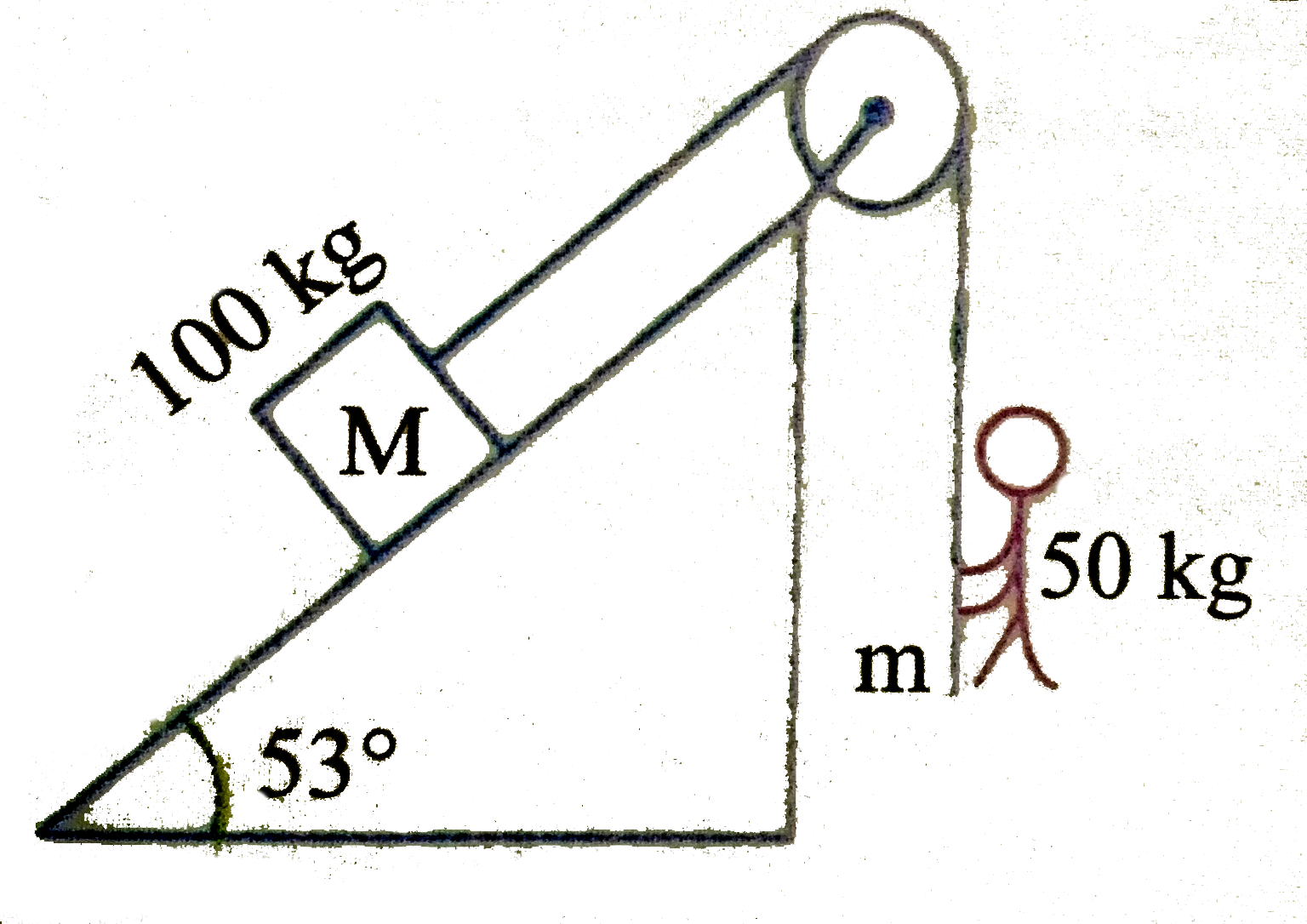 .
.
View SolutionFind the mass M so that it remains at rest in the abjoining figure. Both the pulley and string are light and friction is absent everywhere. (g=10m/s2)
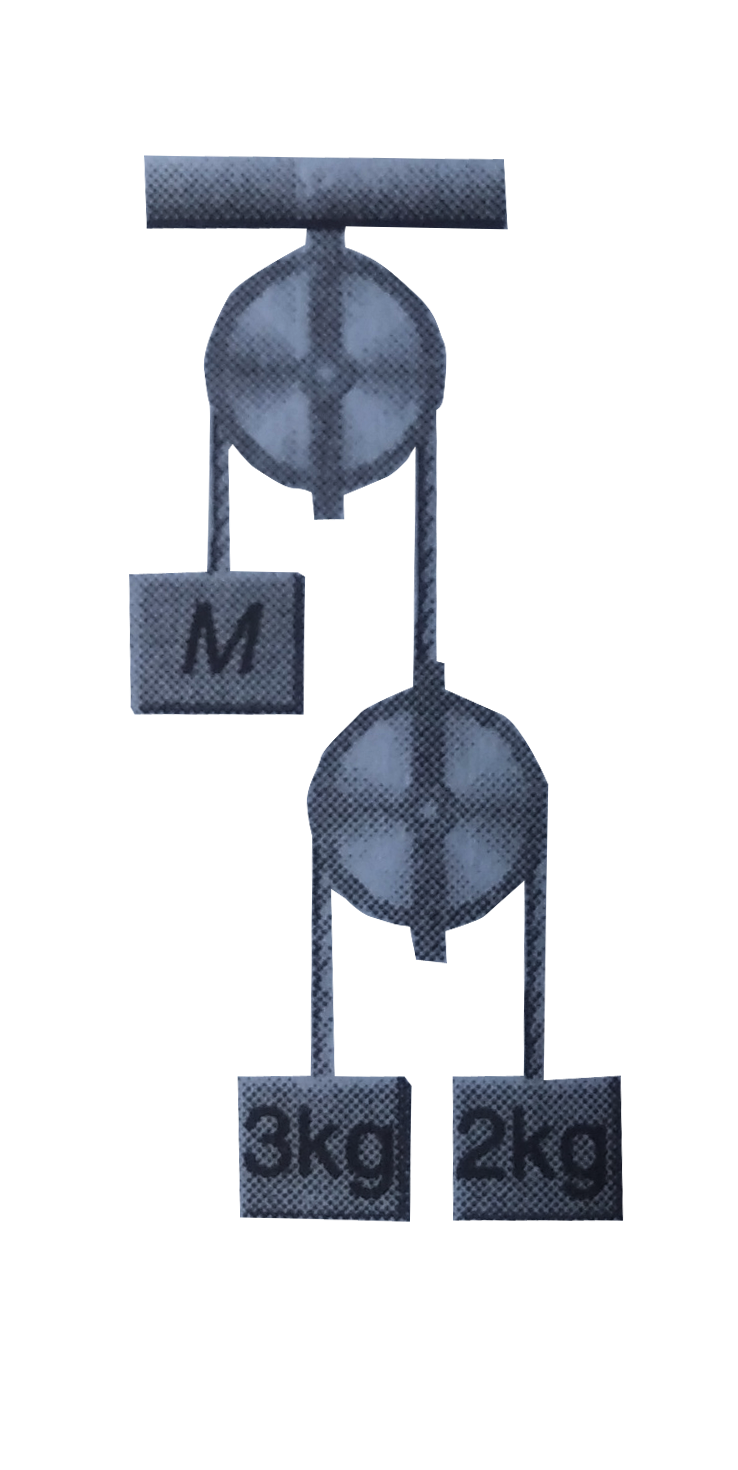
View SolutionIn the arrangement shown in fig. the block of mass m=2kg lies on the wedge of mass M=8kg. The initial acceleration of the wedge, if the surfaces are smooth, is
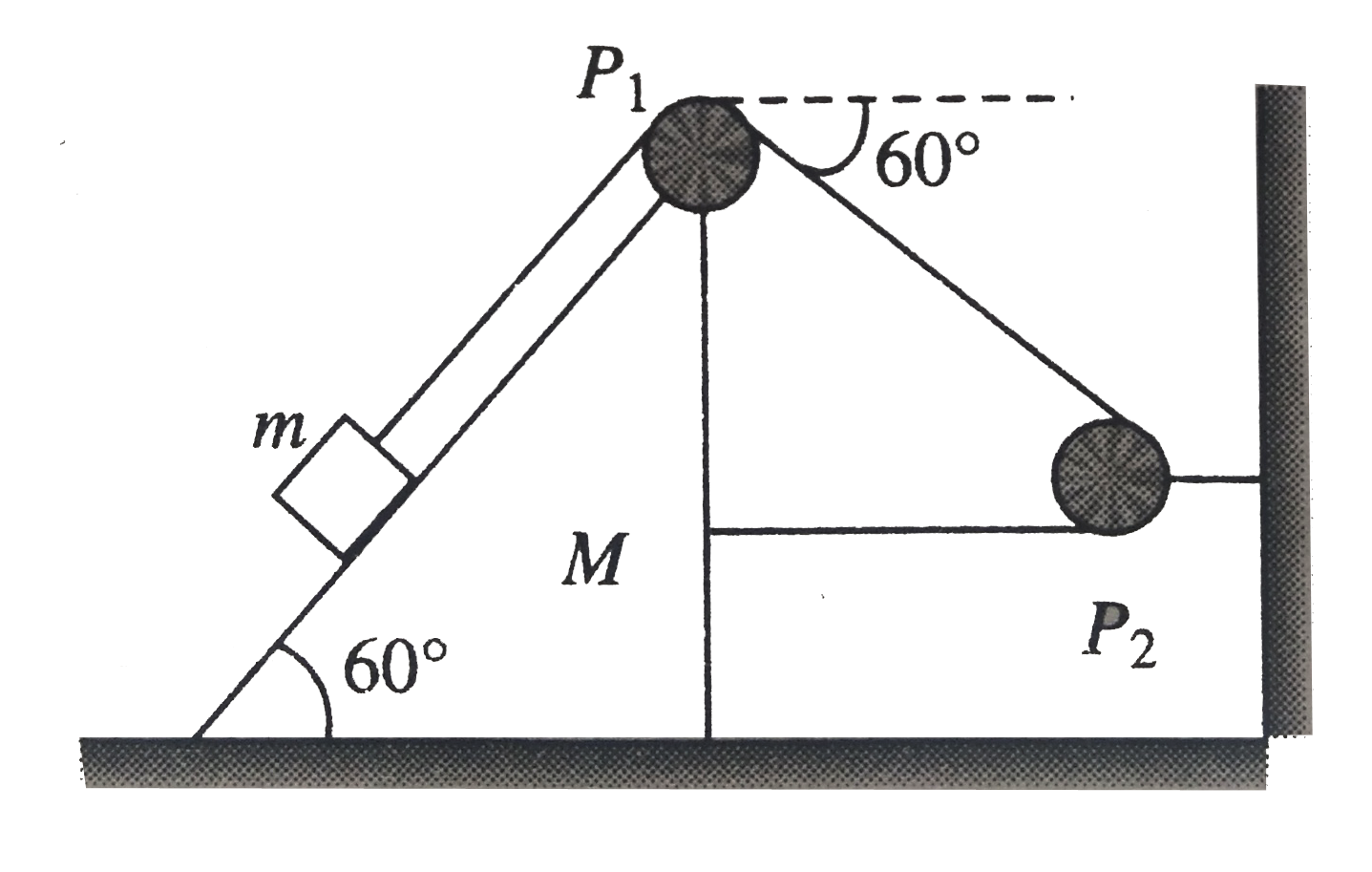
View SolutionNeglect friction. Find acceleration of m,2mand3m as shown in the figure. The wedge is find.
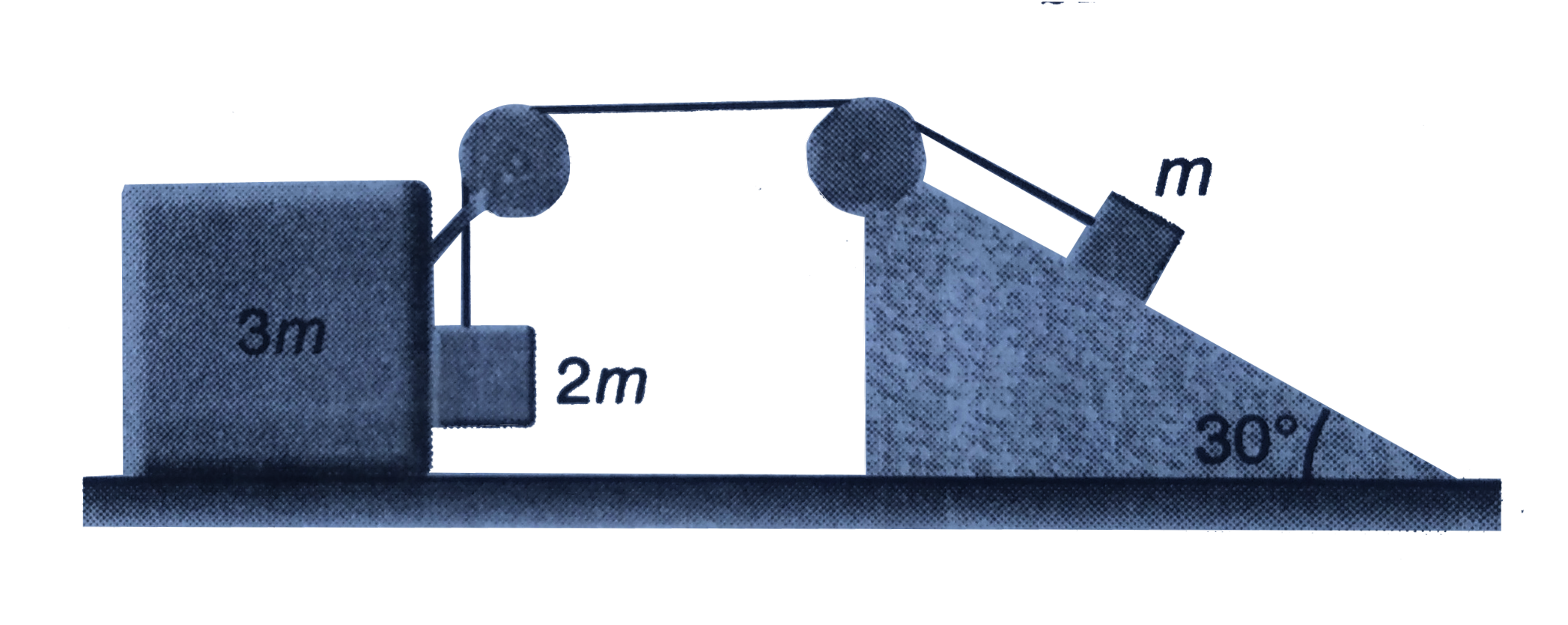
View SolutionA ball of mass 1 kg is released from position A inside a wedge with a hemispherical cut of radius 0.5 m as shown in figure. The force exerted by the wedge on ball, when the ball is in position B is (neglect friction everywhere) (Take g=10m/s2)
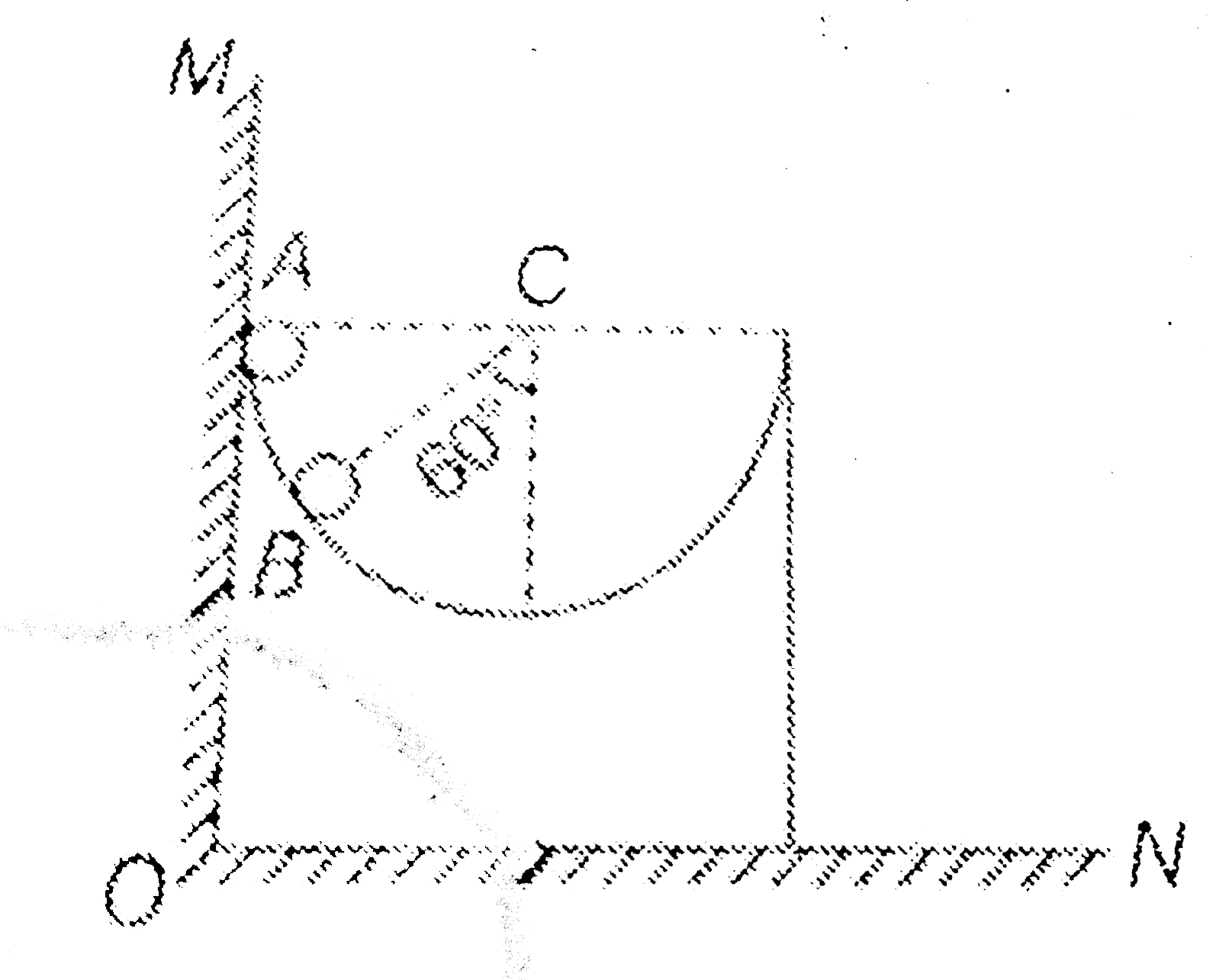
View SolutionThe block C shown in the figure is ascending with an acceleration a=3m/s2 by means of some motor not shown here. Find the acceleration of the bodies A and B of masses 10kg and 5kg respectively in m/s2, assuming pulleys are massless and friction is absent everywhere.
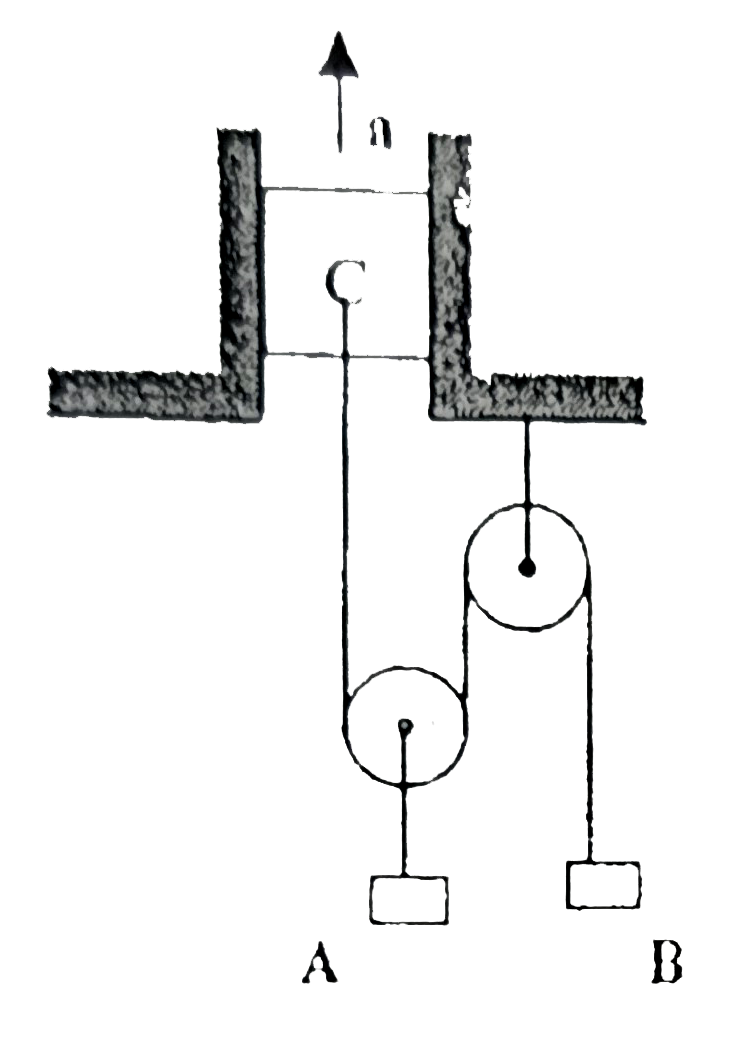
View SolutionA block of mass m slides down on a wedge of mass M as shown in figure .Let a1 be the asseleration of the acceleration of and a2 the the acceleration od block 1N1 is the normal reaction between block and wedge and N2 the normal reaction between wedge and gound .frication is absent everwhere .Select the correct alternative(s)

View SolutionAll surfaces shown in the figure are frictionless. A block of mass 2 kg is kept on a wedge of mass 10 kg. If the mass m remains stationary w.r.t wedge , the magnitude of force P is ( g = 10m/s2)
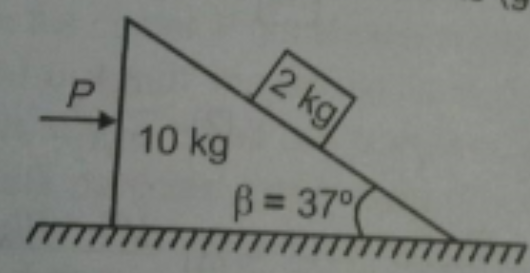
View SolutionA block of mass m, is kept on a wedge of mass M, as shown in figure such that mass m remains stationary w.r.t. wedge. The magnitude of force P is
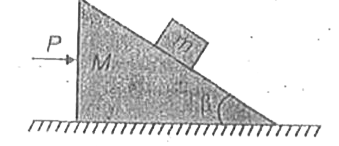
View SolutionIn the arrangement shown in figure the masses of the wedge M and the body m are known. The appreciable friction exists only between the wedge and the body m, the friction coefficient being equal to k. The masses of the pulley and the thread are negligible. Find the acceleration of the body m relative to the horizontal surface on which the wedge slides.

View Solution
